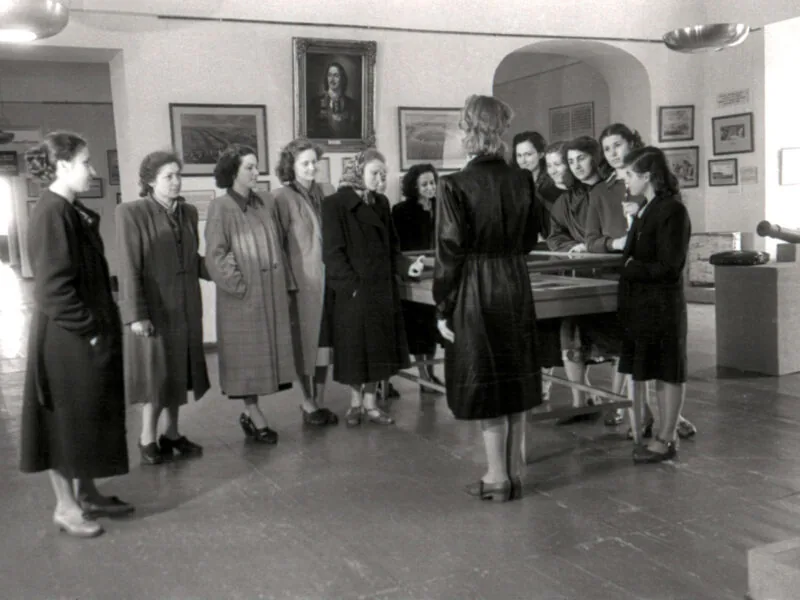
Adapting to the Soviet occupation (1944–1990)
After World War II, the Museum had to comply with various ideological restrictions imposed by the Soviet occupying authorities however, it continued serving its main task – to collect, preserve, study and promote evidence of Latvian history.
World War II, emigration and repressions resulted in the loss of almost the entire Museum’s staff. In the following years, the Museum’s structure and name changed several times: the Central State History Museum (1945), the Latvian SSR History Museum (1956) and the Latvian History Museum (1989). However, the Museum managed to ensure the succession of the collections, their systematisation and introduction into the circulation of the exhibitions.
The work of gathering, recording, preserving and exhibiting collections was reorganised according to the Soviet system. In 1947, the so-called Special Department was set up to record and preserve objects undesirable to the regime and until the 1950s, part of the items of a “bourgeois” or “counter-revolutionary” nature had to be handed over to the General Directorate for Literature (Glavlit) for destruction. However, the Museum’s collection as a whole grew considerably, and by 1989, it consisted of 571,000 items. This was made possible by donations and purchases of objects, as well as by expeditions and archaeological excavations. Greater attention was paid to the conservation of the Museum’s objects by developing conservation and restoration capacities.
The number of staff members and the research capacity grew. In the 1960s, the Museum was able to revive its publishing activities, and the achievements of colleagues during this period were reflected in the collections of articles Archaeology (1962), Ethnography (1964), Numismatics (1968), as well as several monographs.
In addition to the obligatory ideological themes, the museum offered permanent and temporary exhibitions related to Latvian spiritual and material culture, such as “Latvian Folk Costumes” (1948, 1964, 1968), “Knitting” (1956, 1966), “Ceramics” (1957), “Latvian Folk Art” (1950, 1956, 1967, 1968), “Latvian Jewellery” (1957, 1971), etc. As much as possible, the museum developed international cooperation within the USSR and the Socialist Bloc countries.
The museum was actively involved in the events of the Third Awakening. The exhibition “Latvia between the Two World Wars” (1988) gained immense popularity with around 300,000 visitors. Other exhibitions included “Victims of Stalinist Repressions in Latvia” (1989), “Cavaliers of the Order of Lāčplēsis” (1989) and “1940 in Latvia” (1990).